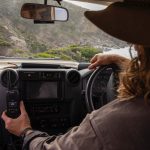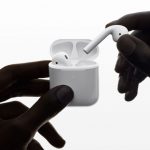How your smartphone can help find a cure for cancer while you sleep
Vodafone has partnered with the Garvan Institute of Medical Research to launch DreamLab – an app that gives your smartphone the power to help find a cure for cancer – and all while you’re sleeping.
DreamLab is an Android that can pool the processing power of an idle smartphone and using that to help work through Garvan’s important research into Australia’s biggest killers – breast, ovarian, prostate and pancreatic cancer.
With the added computing power from 100,000 smartphones running the DreamLab app, researchers would be able to crunch data 3,000 times faster than they are now.
Each smartphone solves a small cancer research problem and the data is sent back to the Garvan Institute via the Amazon Cloud.
Researchers have likened the process to a giant crossword puzzle with each smartphone solving a different clue.
When users download the DreamLab app, they will be asked pick a research project from breast, ovarian, prostate or pancreatic cancer and then nominate the amount of data they’d like to donate for the project from the mobile network – 50MB, 250MB or 500MB a month – or your home wi-fi connection – 250MB, 500MB or 1GB a month.
For Vodafone’s five million pre-paid and post-paid customers, the data they donate for DreamLab through the company’s cellular network will be free and unmetered.
The app will work at night while you’re sleeping and while your device is charging and above 95 per cent battery capacity.
DreamLab is free to download from the Google Play Store and it won’t access any of your private data.
At this stage it will only work with Android devices.
“Almost every Australian has a heartbreaking story to tell about cancer,” said Alyssa Jones, head of the Vodafone Foundation Australia.
“We all want to play a part in the fight against this disease and now, with more smartphones than people, we have an opportunity to make a tangible difference.
Before Australians reach the age of 85, there is a one on three chance for women to develop cancer. For men, it’s a one in two chance.
“As a nation who loves their smartphones, we now have a tremendous opportunity to put them to good use and help find a cure for cancer. Together, we can come to a greater understanding of how to treat it more swiftly,” says Garvan researcher Dr Samantha Oakes.










